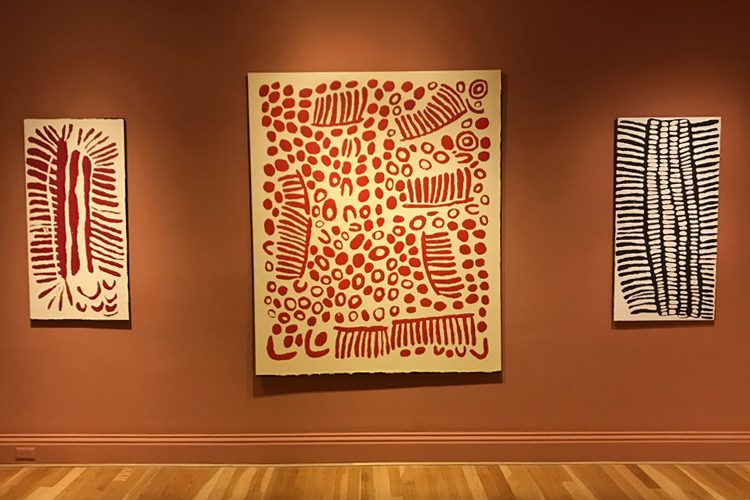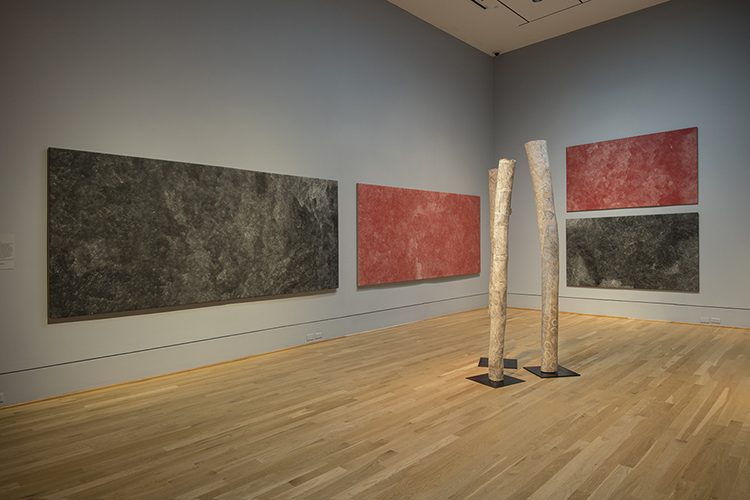“For Wintjiya Napaltjarri, the final act of each painting was all consuming as she surrounded her iconography in a swath of white paint. This illuminated each symbol in the same way that white ochre was used traditionally to encase body paint on naked breasts and arms. Using the wooden handle of a paintbrush, she embarked upon a rhythmic and lyrical process, dipping it deep into a pot of paint and then merging and dabbing dots together until all of the unpainted surface of the linen was covered in white. In my hours of watching this stage, the repetitive sound of this action became an allegory for the pulse of time and the knowledge that is passed through it.” – Sarita Quinlivan, Writer
Watanuma, located northwest of the Kintore Walungurru settlement in the Northern Territory, is associated with the Minyma Kutjarra (Two Women) creation story. This story follows two sisters whose travels shaped the distinctive landscape of the region. Napaltjarri’s painting doesn’t imitate or illustrate topographical features or narrative events but instead uses symbols that allude to the Two Women tale. The ancestral women are indicated by U shapes, while floating comb shapes represent their nyimparra (hair-string skirts). The circles may indicate rock hole formations or the plump fruits of the bush tomato (Solanum chippendalei) that the women gathered on their journeys.
These works are on view in Marking the Infinite: Contemporary Women Artists from Aboriginal Australia through September 9, 2018.




